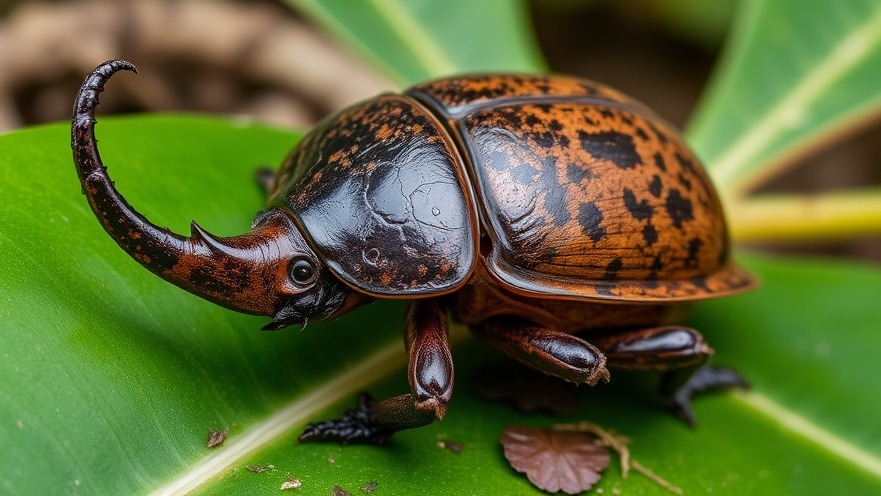
Urgent Call for Action: Protecting Molokai from Invasive Beetles
In a crucial move to safeguard the natural beauty and agricultural heritage of Molokai, a group of dedicated residents is urging the state to implement an interim rule to halt the shipment of plants and mulch to their vulnerable island. The call comes amid alarming signs of the highly destructive coconut rhinoceros beetle, a pest notorious for decimating palm trees and threatening local ecosystems. With no confirmed cases reported on Molokai, the time to act is now.
Understanding the Coconut Rhinoceros Beetle
Residents, led by activist Kunani Nihipali and the Niu Now movement, recognize the coconut rhinoceros beetle as more than just an invasive species; it symbolizes a direct threat to the "tree of life," pivotal in Hawaiian culture. The coconut palm is revered for its multifaceted contributions, from food and shelter to its cultural and historical significance. Nihipali's petition to the Hawaii Department of Agriculture emphasizes that if this beetle takes root, it could devastate this cherished resource for generations to come.
A Call to State Leadership
The urgency of the situation is underscored by recent detections of the beetle larvae and adults in shipments to other islands like Lanai. "If this thing takes off, it’s going to ruin the future of our tree of life," Nihipali warns, reflecting the sentiments of many Molokai residents. The group's petition, which seeks an immediate one-year ban on the transport of materials that could harbor this pest, is scheduled for discussion by the Board of Agriculture and Biosecurity, marking a critical point in the fight to maintain Molokai's ecological purity.
Why This Matters: Environmental and Cultural Implications
The potential arrival of the beetle is not just an environmental issue. It intersects poignantly with cultural heritage, as the coconut palm has been a canoe plant vital from Polynesian life stages—from births to burials. Therefore, the struggle against these invasive pests is a cultural preservation effort as much as it is an ecological one. The community’s connection to this plant reinforces the need for immediate protection actions.
Existing Measures and Future Implications
Even as Molokai remains free of the coconut rhinoceros beetle, ongoing shipments to the island pose a grave risk. The Hawai‘i Department of Agriculture has the power to establish immediate measures to prevent the spread of this pest, which has proven tremendously difficult to eradicate once established. The proactive stance taken by Molokai residents could serve as a template for other Hawaiian communities facing similar threats.
Conclusion: The Importance of Community Advocacy
The endeavor to restrict shipments to Molokai highlights a central theme in today’s environmental policy discourse: the role of local communities in advocating for their ecosystems. As the state considers the petition, it must heed the voices of those most affected and prioritize the unique cultural and environmental landscapes of Hawaii. Actions taken today could very well determine the ecological health of Molokai for future generations—and rest assured, many are watching closely.
Take action now to support local initiatives that protect our natural heritage. Follow the ongoing discussions and contact your local representatives to advocate for stricter environmental protections against invasive species.
 Add Element
Add Element  Add Row
Add Row 



Write A Comment